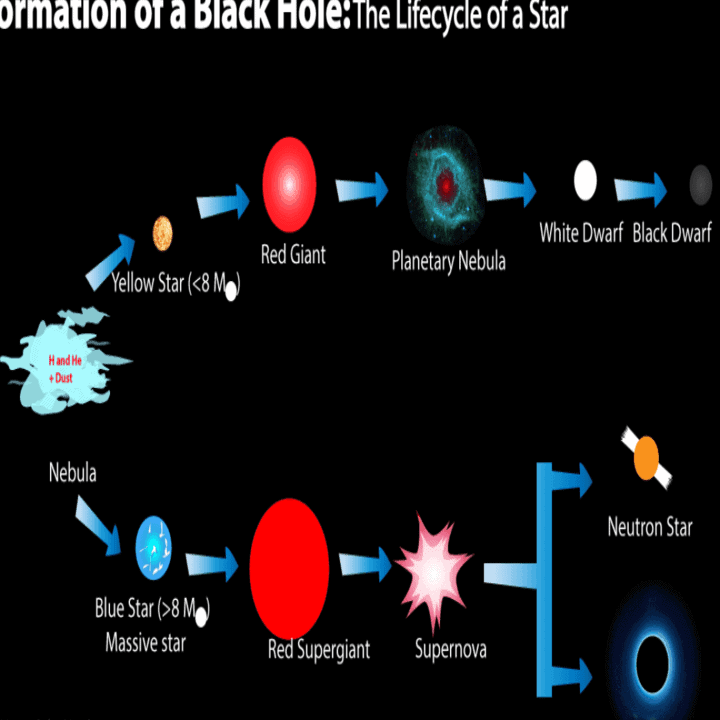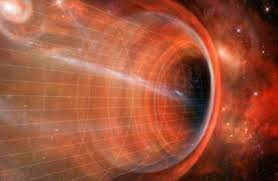
In order to create a black hole, one simply needs to compress any form of matter to a specific radius, such as water. Once compressed, it will transform into a black hole. Certain black holes are formed when stars reach the end of their lifespan and undergo compression. The outer layers of the star exert pressure on the inner layers, causing them to compress. However, due to the high temperatures, the inner layers resist compression. Once the star’s fuel is depleted, it is able to shrink freely, and stars that are 3-4 times more massive than the Sun or greater become black holes.
Classification of black holes [ ]
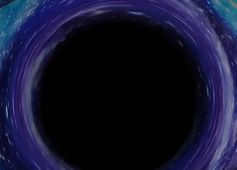
Black holes come in various forms, with the two most extensively researched types being supermassive black holes and stellar-mass black holes (the latter typically found at the cores of galaxies).
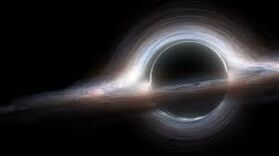
Aside from the existence of primary black holes, there also exist quantum black holes. Primary black holes are created when a stellar mass black hole [ ].
These black holes emerge as a result of the demise of stars and they are plentiful in outer space. Their size is relatively small, ranging from just a few tens to hundreds of kilometers in diameter.
Massive black hole of a supermassive nature
This particular variation of a black hole is the most substantial in size and mass, and there is a significantly lower number of such black holes in the vastness of space compared to their stellar-mass counterparts. These extraordinary objects can be found residing at the core of almost every galaxy. While their exact formation process remains elusive, the prevailing hypothesis suggests that they come into existence through the accumulation of an immense quantity of matter (as previously mentioned).
Falling into the abyss [ ]
What occurs in the event that an individual plunges into the depths of a black hole? So, first and foremost, let’s examine the probable scenarios of an individual’s demise when they fall into a black hole.
Perils of black holes [ ]
One of the two hazards of a black hole is spaghettification. This phenomenon arises due to the non-uniformity of forces, meaning that if we descend into a black hole with our feet leading the way, the gravitational pull of the black hole will exert a stronger influence on our feet compared to our head. Consequently, we will be compressed and stretched like strands of spaghetti. This is why this phenomenon is referred to as spaghettification. However, it comes into effect at different moments – black holes with the mass of a star are relatively small in size, so the disparity in distances is substantial and will tear you apart even before you get close to the black hole.
However, let’s envision a scenario where singularity and spaghettification are nonexistent. What would our descent into the black hole resemble? It’s important to acknowledge that you and the observer would perceive the event in contrasting manners. As you approach the black hole, you would experience [ ].
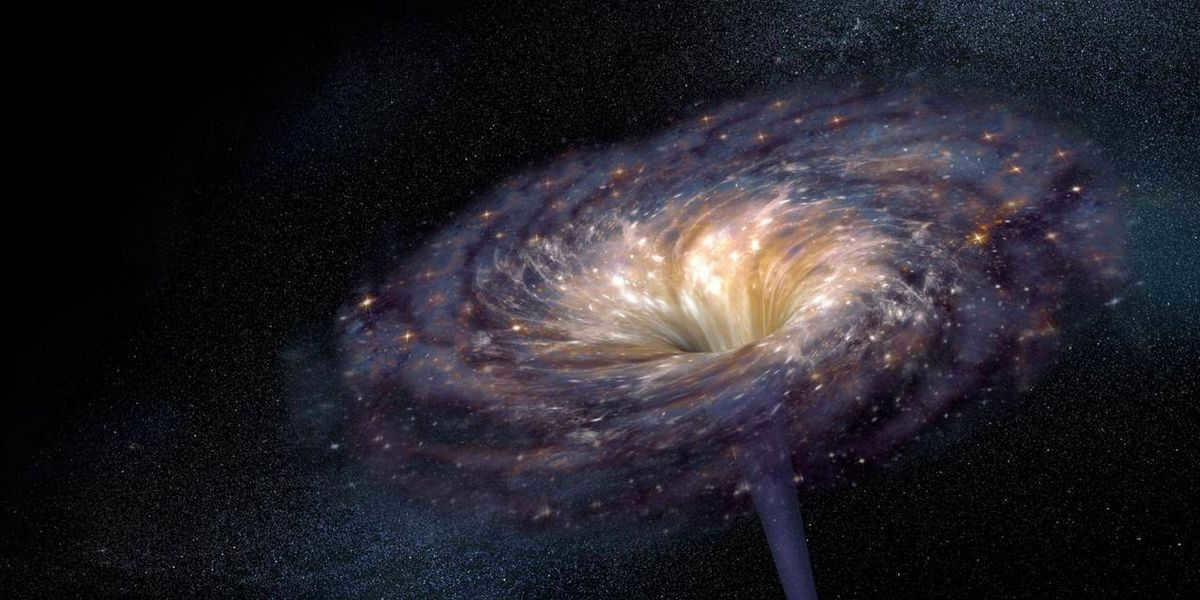

Black holes, also known as collapsars or collapsing stars, have captivated the imagination and sparked countless theories, rumors, and ideas in the realm of science fiction for well over a year now.
Truly, what could be more awe-inspiring than an object with such density and mass that it warps gravity to the point where even light cannot escape? In a universe where all matter either emits or reflects light, black holes stand apart. They live up to their ominous name, appearing as dark voids in the cosmos.
While black holes are a familiar concept to many, their true nature, appearance, and potential danger to Earth remain known only to a select few.
Discovery History
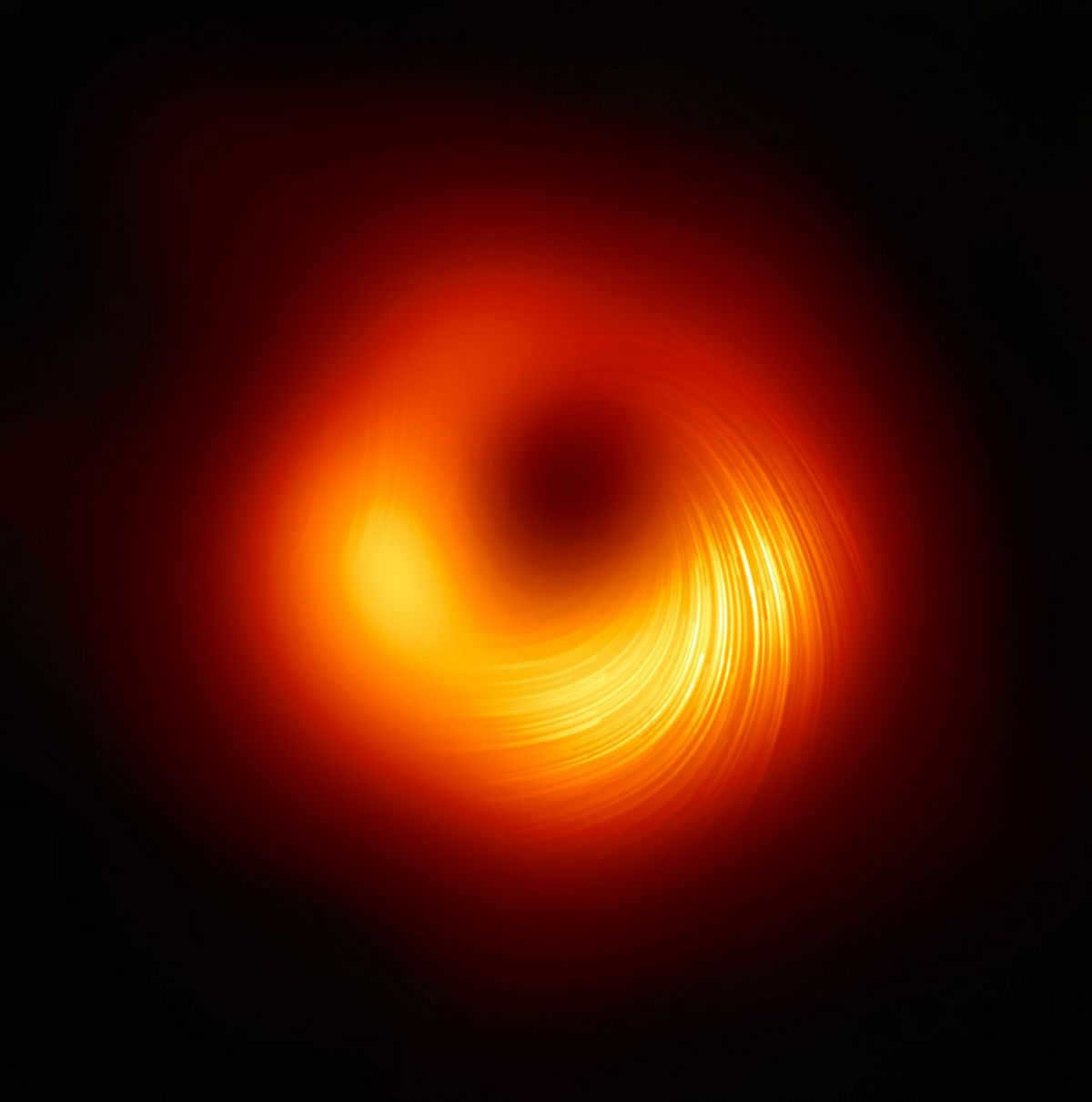
In 2019, the entire world was captivated by the images of a peculiar object captured by the Event Horizon Telescope project in the Messier 87 galaxy.
This photograph, although not highly detailed, marked the first genuine depiction of a black hole captured by humanity and provided confirmation of the existence of the infamous “event horizon,” which inspired both the name of the telescope and the entire project.
However, the history of studying these cosmic phenomena extends far into the past, reaching not just decades, but also centuries, which is not widely known.
In 1796, the French scientist Pierre-Simon de Laplace mentioned this theory in his scientific works, which led to its increased popularity.
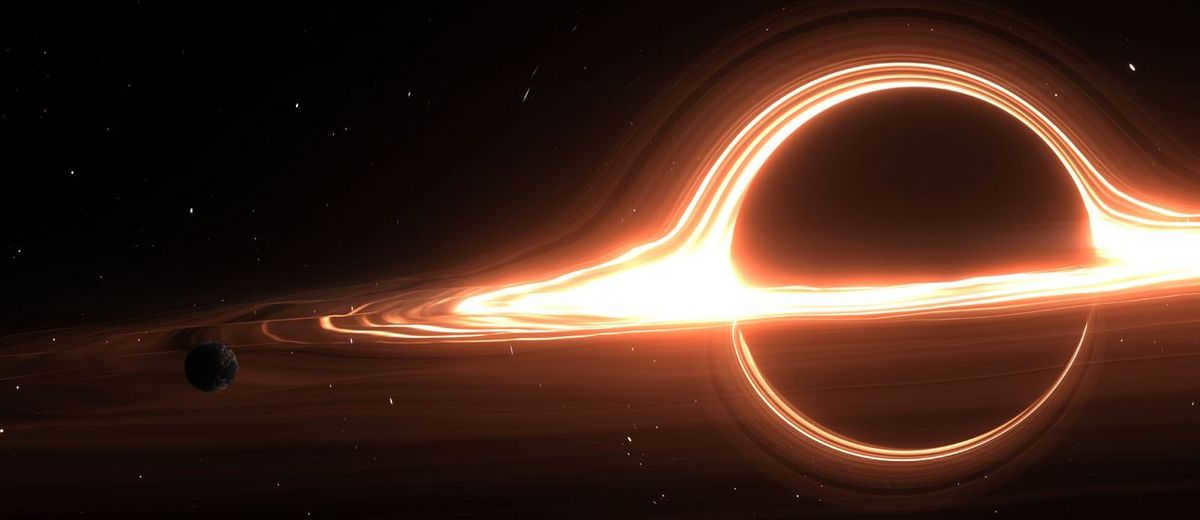
However, scientists did not pay much attention to this theory until 1915. The reason for this was that the speed of light was not considered a fundamental and crucial unit in physics for a long time.
It was only after Albert Einstein formulated his Special Theory of Relativity (STO) that the importance of the speed of light became clear in the field of physics. According to the postulates of STO, nothing can travel faster than the speed of light in a vacuum.
The General Theory of Relativity (GTR) was formulated by Einstein in late 1915. It served as a replacement for Newtonian gravity, which was inadequate for objects traveling at or near the speed of light. The theoretical groundwork for GTR was laid by German astrophysicist Karl Schwarzschild, who solved Einstein’s equations and predicted the existence of black holes well before their detection.
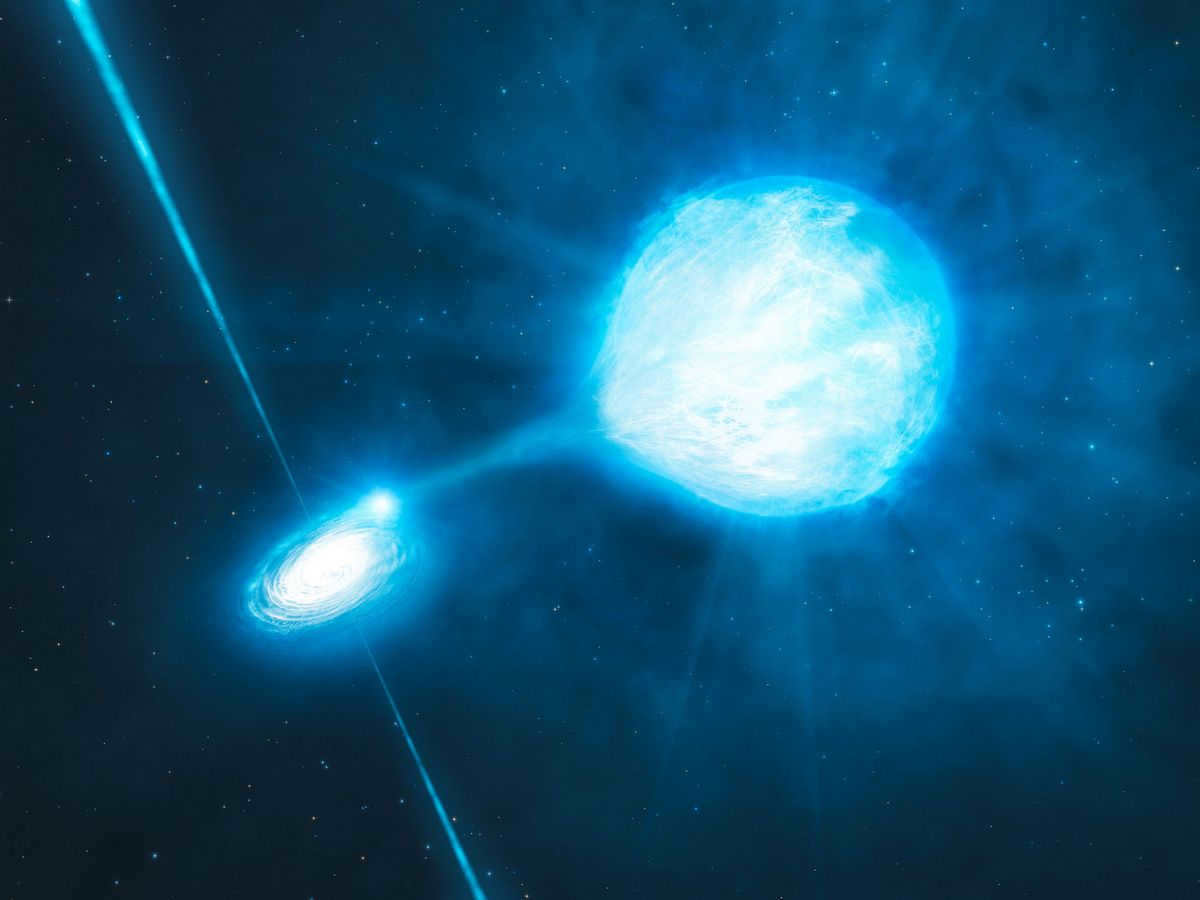
The exploration of space and theoretical physics has advanced rapidly. The progress in mathematics, astronomy, and astronautics has not only sparked interest but also provided new tools for problem-solving and finding answers.
In 1967, the term “black hole” was officially and firmly introduced thanks to the lectures of American theoretical physicist Archibald Wheeler.
Other prominent scientists, such as Alexei Starobinsky, Yakov Zeldovich, Stephen Hawking, Jacob Bekenstein, and others, have further solidified the term in their works.
Structure of a black hole
Studying a black hole is an insurmountable challenge. The reason for this is that a black hole is a region in space-time that possesses an incredibly powerful gravitational pull, so powerful that no object, regardless of its speed, can escape its grasp.
Furthermore, since nothing can travel faster than light, it is impossible to observe or receive any information from the inside of a black hole. Scientists are therefore left with the task of constructing mathematical models and analyzing the surrounding space in order to gain insights into the nature of black holes.
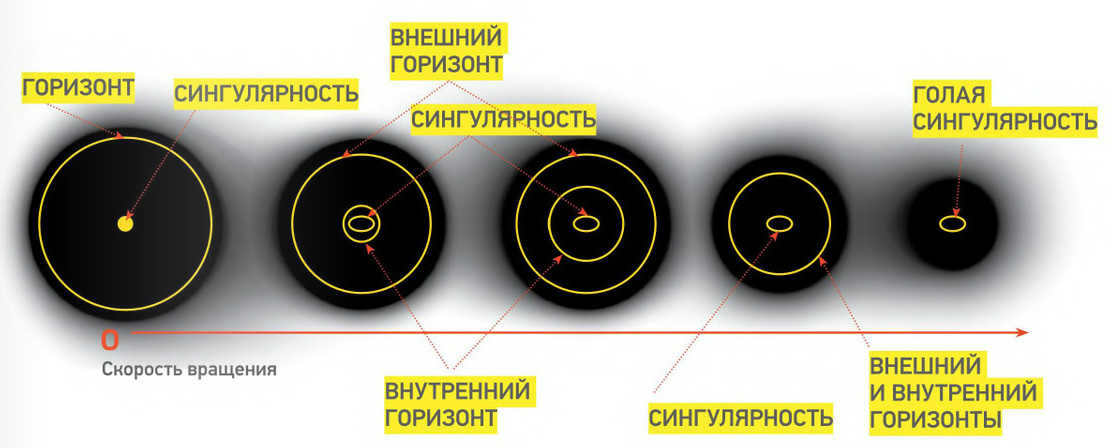
To gain a deeper understanding of how this phenomenon occurs and its nature, let’s examine the classic example described by Schwarzschild. This serves as a simplified representation of a collapsar, which can be visualized as a symmetrical sphere characterized solely by its mass.
The presence of mass causes the curvature of spacetime, causing light rays that come too close to the black hole to deviate from their original path. This leads to the formation of a luminous swirling effect, commonly observed in images of black holes, including the iconic 2019 photograph. Referred to as a “photon sphere,” it often serves as a distinctive feature for identifying black holes in space.
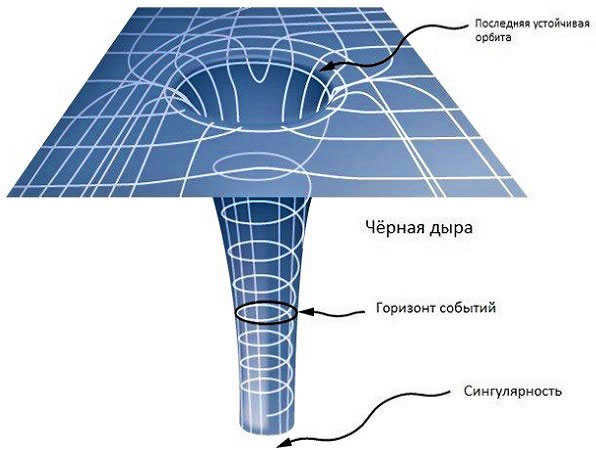
The region inside the photon sphere contains a dark area known as the event horizon. This is typically what comes to mind when discussing black holes. Anything that enters the event horizon is forever trapped by the immense gravitational pull and cannot be observed by the wider universe.
Furthermore, since nothing, including information, can travel faster than the speed of light, anything that falls into a black hole cannot have any impact or interaction with the rest of the Universe from the perspective of an external observer, such as an astrophysicist or ourselves.
Every conceivable occurrence inside a black hole is considered to be hidden beyond the “horizon” from the rest of the world, a concept named by the American relativistic physicist Wolfgang Rindler.
Located at the very core is the incredibly dense “gravitational singularity.” This point in space-time possesses an infinitely intense curvature that cannot be directly observed, making it exist solely as a theoretical construct beyond the event horizon.
An illustration depicting a complete orbit around the black hole and its accretion disk along a path perpendicular to the disk.

Radio galaxy Painter A is displaying a remarkable jet of X-ray radiation (shown in blue) extending over a distance of 300 thousand light-years, emanating from a supermassive black hole.
Anything that crosses the event horizon of a black hole inevitably reaches the singularity, a place where the ordinary laws of nature cease to apply and existence takes on a form that eludes our imagination and comprehension.
Naturally, numerous individuals are curious about the origins of these peculiar cosmic entities. On occasion, they appear to exist solely to challenge our perceptions of reality or validate the boldest scientific conjectures.
In spite of the absence of a definitive solution, contemporary astrophysics recognizes four categories of black holes and their origins:
- Supermassive black holes are located in the centers of galaxies, including the Milky Way. These are the type of black holes that were depicted in the famous 2019 image. Their mass is a billion times that of the sun. The exact cause of their origin remains unknown. According to one theory, they are stellar black holes that have grown by absorbing surrounding matter. Another theory suggests that they form from dense clusters of several stars or gas clouds, which collapse and become compressed to an incredible density under the influence of gravity.
- Stellar black holes are the most commonly known. They are former stars with enormous mass (20-40 times that of the Sun) that collapsed and shrank to tiny sizes in the later stages of their evolution. This category also includes neutron stars that have accumulated a significant amount of gas through attraction.

- Remnants. This class represents more of a theoretical concept and has not been observed in outer space thus far. According to scientific hypotheses, these remnants are the tiniest and oldest black holes that originated shortly after the occurrence of the Big Bang, not from massive celestial bodies, but from extremely dense matter during a period when the universe was still undergoing expansion.
- Quantum. These black holes are also a relatively new theoretical notion. As the name implies, they are connected to the principles of quantum physics. Despite their minuscule size, they possess an extraordinary density. Their mass is approximately a hundred thousand times less than that of a single gram! Some scientists have proposed that they could emerge during nuclear reactions.
Queries
Undoubtedly, comprehending the concept of black holes is exceedingly intricate. It provokes numerous inquiries among the eminent scientific community, not to mention the general populace who haven’t dedicated years to exploring sophisticated realms of physics. Consequently, a plethora of misunderstandings and preconceived notions about black holes prevail.
It is common knowledge that nothing can exceed the speed of light in a vacuum. However, there have been numerous theories, both scientific and purely speculative, about the existence of “moleholes” that serve as tunnels connecting different points in space. To better understand this concept, imagine folding a piece of paper in half and poking a hole through it. It’s important to note that a molehole is not the same as a black hole, and vice versa. While a black hole always has an event horizon, it doesn’t necessarily connect different points in space-time. On the other hand, a molehole always connects such points, but may not have an event horizon. Unfortunately, scientists only have theoretical justifications for moleholes at this time, and there are no recorded instances of these objects in space.
When the Large Hadron Collider was first activated, there were concerns that it may generate a black hole that could potentially annihilate all life on Earth. However, it has been mentioned earlier that these would be quantum black holes, which do not pose a significant threat. This is due to the fact that these black holes would be extremely minuscule and would vanish in less than a fraction of a second, as calculated by renowned physicist Stephen Hawking. Even if by some chance a black hole did not dissipate and remained on our planet, its infinitesimal size would require hundreds of billions of years – a duration much longer than the Earth’s existence – to cause any substantial harm.
Doing this is extremely challenging, and it is improbable that people will ever directly engage with these extraterrestrial creatures. Nonetheless, researchers have a hypothesis about what would occur, but the explanation is highly intricate and varies depending on one’s point of view. From an external observer’s perspective, an individual trapped in a black hole would elongate horizontally and compress vertically, ultimately disintegrating in the intense radiation at the event horizon. The individual falling into the black hole would perceive their entire existence as an infinitely stretched moment in time, with no possibility of returning beyond the horizon. In any scenario, the encounter is unpleasant.
Many people believe that a black hole is the ultimate stage in the life cycle of supermassive stars, signifying the end of everything. However, this is not entirely true. Stephen Hawking discovered that black holes do not exist indefinitely, and he even named a special type of radiation after himself. When a black hole no longer has any surrounding mass to absorb, it ultimately perishes in a spectacular burst of brilliant light.
Black holes are a popular topic for science fiction writers because they offer endless possibilities and unanswered questions. One intriguing idea is that black holes could serve as portals to parallel universes. This concept, supported by Stephen Hawking, is based on the principle that information cannot be destroyed in quantum physics. If black holes are not eternal, then the information must go somewhere, potentially to another universe. However, this remains purely speculative and cannot be proven or tested at this time. Therefore, while it is a fascinating concept, it is also highly unlikely.

Black holes are one of the least explored and most intriguing entities in the universe. They have captured the imagination of many science fiction writers, who often depict them as colossal “vacuum cleaners” lurking in the depths of the cosmos, voraciously devouring anything in their vicinity. However, in order to truly comprehend the nature of a black hole, let us examine it from a scientific perspective.
A brief overview of the history…
The concept of such an entity was first conceived by John Michell, an English priest, back in 1784. His idea suggested that a celestial body with a radius of 280.3 times that of the Sun and with the same density as the Sun would possess a surface velocity equal to the speed of light, rendering it invisible as light would be unable to escape. However, it wasn’t until the early 20th century, with the advent of Einstein’s theory of relativity, that black holes began to be seriously discussed.
In this article, we will refrain from delving into complex mathematical equations and instead focus on the Schwarzschild radius formula:

The Schwarzschild radius of a black hole, denoted as Rs, is calculated using the formula Rs = (2GM) / c^2, where G is the gravitational constant and c is the speed of light. If the mass of a black hole is equal to that of the Earth, then its Schwarzschild radius would be a mere 9 millimeters. This means that if someone could somehow compress the Earth to this size, it would become a black hole. On the other hand, for the Sun, the Schwarzschild radius is approximately 3 kilometers.
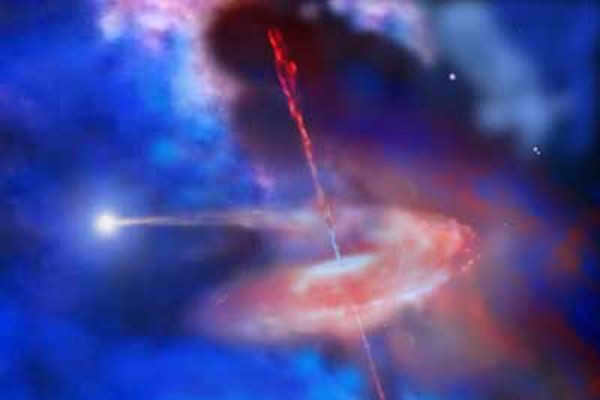
Black holes possess two critical characteristics: the presence of an event horizon and a singularity that separates it from the rest of the universe.
The event horizon is located on the Schwarzschild radius and serves as a boundary that confines the space within the black hole. Any information regarding events occurring outside the event horizon is unable to cross into the black hole.
A singularity refers to the region within a black hole where the gravitational equations yield solutions that lack clear physical interpretations. In other words, despite scientists’ accumulated knowledge and expertise, a definitive explanation for what transpires within a black hole remains elusive.
What is the process of falling into a black hole?
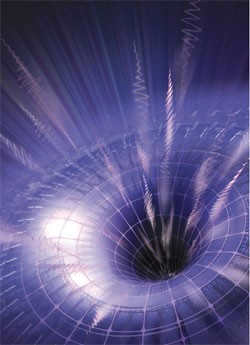
Nevertheless, the solutions to the equations of special relativity offer a response to an equally captivating inquiry: what is the process of descending into a black hole like? For an individual situated inside a spacecraft that is bound for a black hole, their velocity in relation to the black hole will continue to escalate until it reaches the speed of light.
When the observer is positioned at a significant distance from the black hole, the scene will appear drastically distinct. As the spacecraft moves closer to the black hole, the transmission of information from it to the observer’s position will experience a progressively longer delay. From the perspective of the observer, the velocity of the spacecraft will gradually diminish as it nears the event horizon. According to the observer’s timekeeping, it would require an infinite amount of time for the spacecraft to cross the event horizon and vanish from radar.
Let’s revisit the pilot of the spaceship. Based on his own timekeeping, it won’t be long before he reaches the event horizon. However, he won’t actually witness this event in its entirety. The reason being that as he gets closer to the black hole, the force of gravity will increase. Additionally, the gravitational pull will become more uneven. Near the event horizon, the force can become so strong that it has the potential to not only dismantle the spaceship, but also break molecules down into atoms.
The following video showcases the visual perspective of a space starship pilot descending into a black hole.
Let’s discuss the concept of nonuniformity in this scenario. Let’s imagine that we are descending headfirst into a black hole. In this situation, our feet would experience an acceleration of 100 meters per square second, while our head would only experience an acceleration of 50 meters per square second. Needless to say, this would not be a pleasant experience. A similar level of nonuniformity exists here on Earth, but it is so minuscule that it goes unnoticed. The difference in gravitational acceleration between our feet and our head, similar to the example above, is less than one millionth of a meter per second.
There is a theoretical discussion of various types of black holes, both contaminated and uncontaminated, rotating and non-rotating. However, up until now, there has been very little experimental exploration of this phenomenon. Throughout astronomical observations in the latter half of the 20th century, astronomers have identified several objects that exhibit characteristics similar to black holes. Examples of such objects include certain quasars and the cores of certain galaxies.
Methods of Black Hole Formation
Based on current theories, there are four distinct methods by which a black hole may come into existence:
- Gravitational collapse of a star that is massive enough and has reached the end of its lifecycle.
- Galactic central collapse. This occurs when the central region of a galaxy collapses, such as in the case of Sagittarius A* in our own Milky Way, which has a mass equivalent to 3.7 times that of our sun. The key difference here is that a star does not form during the gravitational compression of interstellar gas. The gas mass is so immense that it undergoes compression until a black hole is formed.
- Black hole formation during the Big Bang as a result of fluctuations in the gravitational field or matter.
- The formation of black holes, specifically in nuclear reactions at high energies, leads to the emergence of quantum black holes.
Black holes are an incredibly intricate and enigmatic phenomenon that will continue to baffle scientists for many years as they strive to comprehend the true nature of these cosmic entities.
Written by Mikhail Karnevsky and Tatiana Sidorova
Last updated on June 17, 2018
Copying without a live hyperlink is strictly forbidden!
Sergey Chebyshev 13.09.2017 16:27
Before discussing the concept of “black holes”, I believe it is important to introduce the following hypothetical concepts: a primary Universe refers to any Universe that existed before our current Universe; the Universe refers to our current Universe; a primary black hole is any black hole from which the primary Universe originated; and a black hole is any black hole that formed within our Universe.
Now, let’s delve into what is commonly known as a “black hole”. According to my hypothesis, primary black holes and black holes can be seen as a extreme state of a rotating solid object. This object, for a given mass and volume, experiences maximum pressure and temperature, and consists of elementary particles shaped like ellipsoids. These particles are tightly pressed against each other by maximum forces and rotate at very high speeds, similar to the rollers of a friction mechanism. For more detailed information on the topics discussed above, please visit the following articles on my page: http://vk.com/id215823556. The articles are titled:
1. “On black holes and gravity” – published on March 26, 2017
2. “On black holes” – published on February 26, 2017
Yuri 10.02.2017 10:13
CHEMEZOV, please leave this place with your supernatural powers, it is revolting to peruse your incoherent ramblings of a person who has lost touch with reality. Utterly oblivious to the topic at hand, you unload a plethora of nonsensical remarks resembling fragments of a deranged individual.
Yegor Chemezov 02.04.2016 20:13
I despise the term big bang. It is perhaps the most foolish expression that mankind has created to try and explain the inexplicable. Egor Chemezov once said, “To an observer, a black hole simply does not exist. It is already very peculiar, as its properties suggest that it exists, yet it also does not.” So, what exactly is a black hole in space? Every living organism undergoes constant renewal. Within every living organism, there is cell division, and every living organism has the ability to control this cell division (losing control over cell reproduction can lead to cancer). All cells that have completed their lifespan are destroyed, meaning old cells break down into molecules. This process is carried out by T4 cells produced within the organism, which distinguish between functioning and non-functioning cells. Our universe, and perhaps the entire cosmos, can be seen as a living organism. Almost all processes occurring on Earth mirror those happening in the universe. After all, the Bible states that God created man in his own image. A black hole in the cosmos can be seen as a sort of sanitizer. It is a bubble in space devoid of Ether. When a material object enters this bubble, its physical properties are drastically altered. (For example, a steel bar in usual conditions becomes as malleable as heated plasticine within this bubble). The purpose of this black hole bubble is to disintegrate waste material. More precisely, within a black hole, material objects are decomposed into their primary component – Ether. Black holes have no gravity, absolutely none at all. We cannot see light in a black hole because Ether acts as a conductor for magnetic waves, and this very Ether is absent within a black hole. Small black holes (which I would rather call black bubbles) can often be observed on the surface of the Sun as dark spots. They orbit the Sun, clearing debris from its orbit to enhance the flow of solar energy in the equatorial region. When I discover how a black hole is formed, I will share that information with you. Egor Chemezov—Nukuty—Irk.obl.—27.06.14g—chemezov.jimdo.com I used to think I was a pioneer in the study of black holes, but it seems I am not. I found these quotes on the Internet. “Let’s consider a simple example from everyday life. Nowadays, more and more people use computers. Firstly, computers allow us to quickly find the information we need; secondly, we can easily process this information on a computer and delete any unnecessary data in the trash, thus cleaning up the computer. The same concept applies to our physical world: everything that is used up is absorbed by a black hole (similar to a computer’s recycle bin).” “The role of black holes becomes clear and comprehensible when viewed from an energetic perspective with the Aether theory added. In this theory, particles of matter are purely energy formations derived from rotating Ether, and in black holes, matter is destroyed and reverts back to calm Ether. For more details, refer to my book “How UFOs Fly” by Eugene Rofin.” “Comment by Eugene Rofin – February 8, 2014 #”
Alexander 29.06.2014 01:50
Nothing, not even light, can escape the powerful gravitational pull of a black hole. On the other hand, masers are known to be incredibly efficient sources of cosmic energy. How is this possible? The key lies in the concept of resultant force in physics, where the combined effect of all forces determines the outcome. In the case of a black hole, this includes gravitational force, centrifugal rotational force, and magnetic induction. Additionally, the pressure force of light, although absorbed by the black hole, also contributes to the resultant force. Under certain conditions, this resultant force can be directed outward instead of inward, potentially leading to an explosive event akin to a Big Bang.
Serge 20.11.2012 12:49
I am grateful for the advancements in modern physics. While medieval scholars pondered over how many devils could fit on the head of a pin, our physicists have now accurately calculated the exact number. There is no longer any room for doubt, as the calculations have provided us with a definitive answer!

A black hole is one of the most awe-inspiring phenomena in the vast expanse of the Universe. It has been theorized that the heart of our galaxy harbors a supermassive black hole, a gravitational force so immense that it consumes everything in its path. The scientific community has delved into the intriguing question of how black holes are formed and the likelihood of their growth.
As such, this article aims to shed light on the formation process of black holes and elucidate their defining characteristics.
Main Features
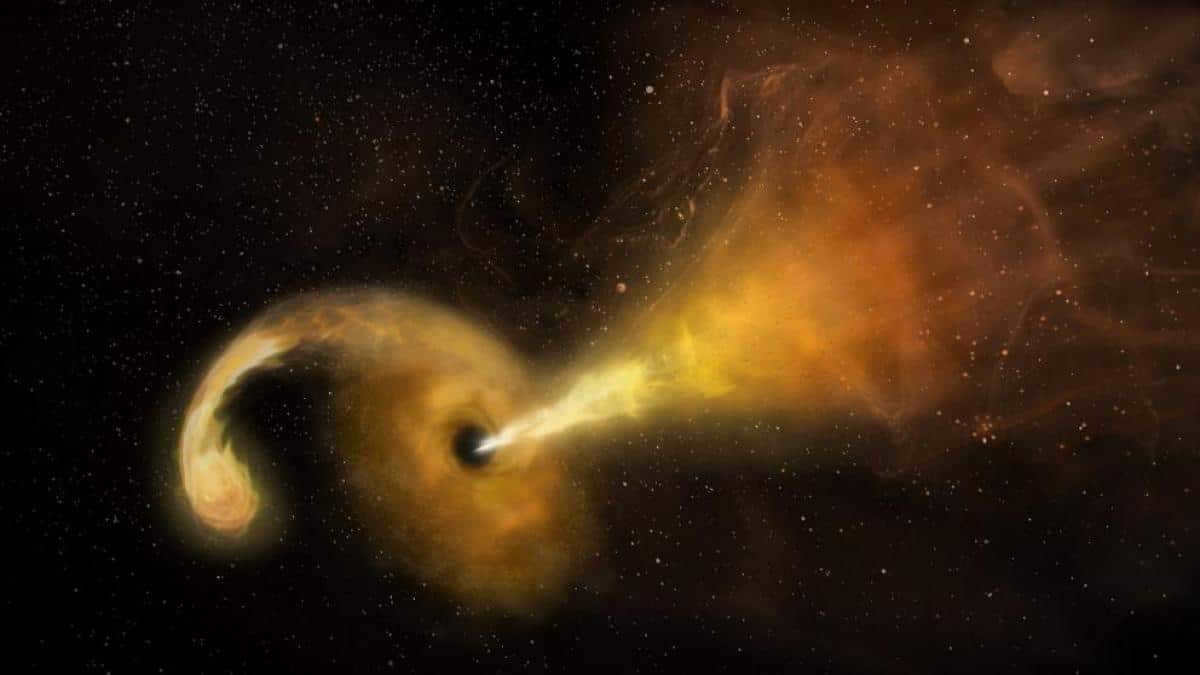
These black holes are simply the remnants of ancient stars that are no longer in existence. Stars typically contain a vast amount of matter and particles, resulting in a strong gravitational pull. It is evident when observing the sun and its eight planets, as well as other stars continuously orbiting around it. The solar system owes its existence to the gravitational force of the sun. Although the earth is being pulled towards the sun, it doesn’t mean that we are gradually getting closer to it.
If no force can counteract the force of gravity, a phenomenon known as a black hole can occur. Black holes have the ability to compress all space and reduce its volume to zero. This extreme compression results in an infinite density within the black hole. Essentially, an unlimited amount of matter can exist within a zero volume. As a result, the gravitational force exerted by a black hole is also infinite. Any object or particle within its vicinity is irresistibly drawn towards the black hole, unable to escape its powerful gravitational pull.
Even light, which is typically able to travel freely through space, cannot escape the gravitational grip of a black hole. The immense gravitational force of a black hole traps light within its own orbit, preventing it from emitting any further light. This is why black holes are called “black” – they do not emit any visible light. It is important to note that while the gravity of a black hole is infinite only at the point of zero volume, where space is folded up, these gravitational behemoths still attract and interact with matter and energy in their vicinity.
Formation of a black hole
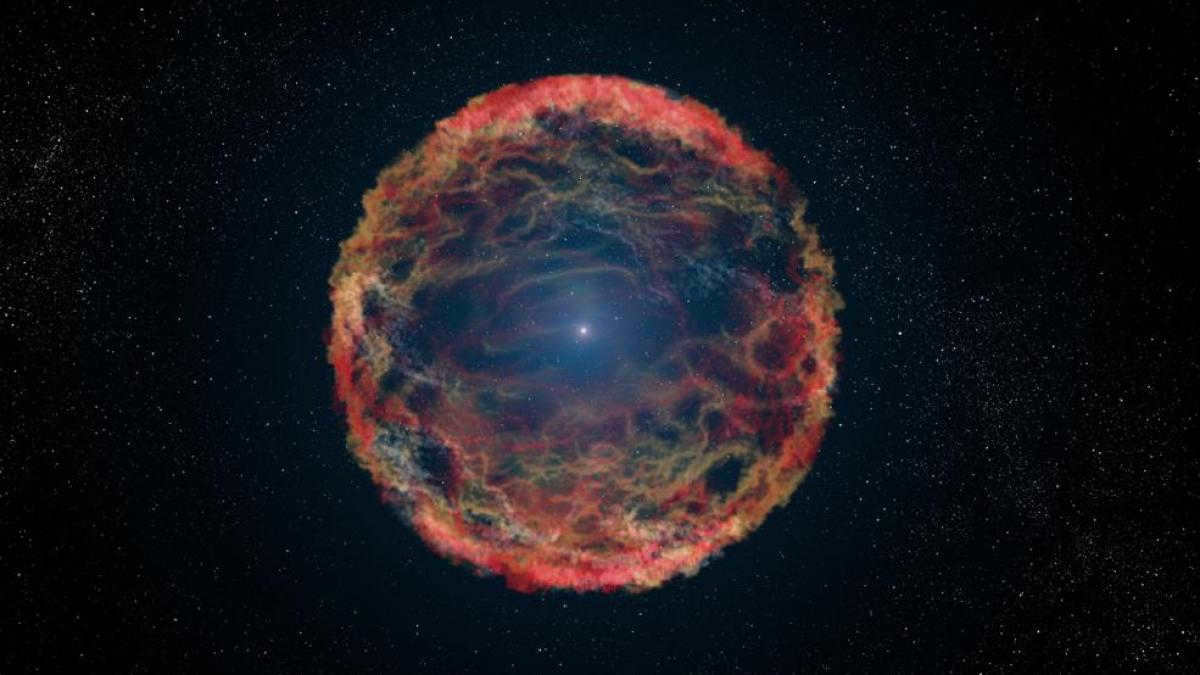
Black holes are formed solely from extremely massive stars. When these stars exhaust their fuel supply towards the end of their lifespan, they undergo a catastrophic and irreversible collapse, resulting in the creation of a void in space known as a black hole. If the stars are not large enough, the material they are comprised of can prevent them from collapsing completely, resulting in the formation of a dying star that emits minimal light, such as a white dwarf or a neutron star.
The distinguishing factor among black holes is their size. Stellar black holes are those that possess a mass equivalent to that of the Sun and have a radius of tens or hundreds of kilometers. On the other hand, supermassive black holes exist at the cores of galaxies and have masses ranging from millions to billions of times that of the Sun.
There is also a possibility of the existence of intermediate black holes, with masses ranging in the hundreds of thousands of solar masses, as well as early black holes that formed at the inception of the universe, with potentially very small masses. These black holes have an incredibly strong gravitational pull, making it impossible to easily break free from their grasp. If even the fastest light in our universe cannot be extinguished, then nothing else can be either.
The incredible power of a black hole
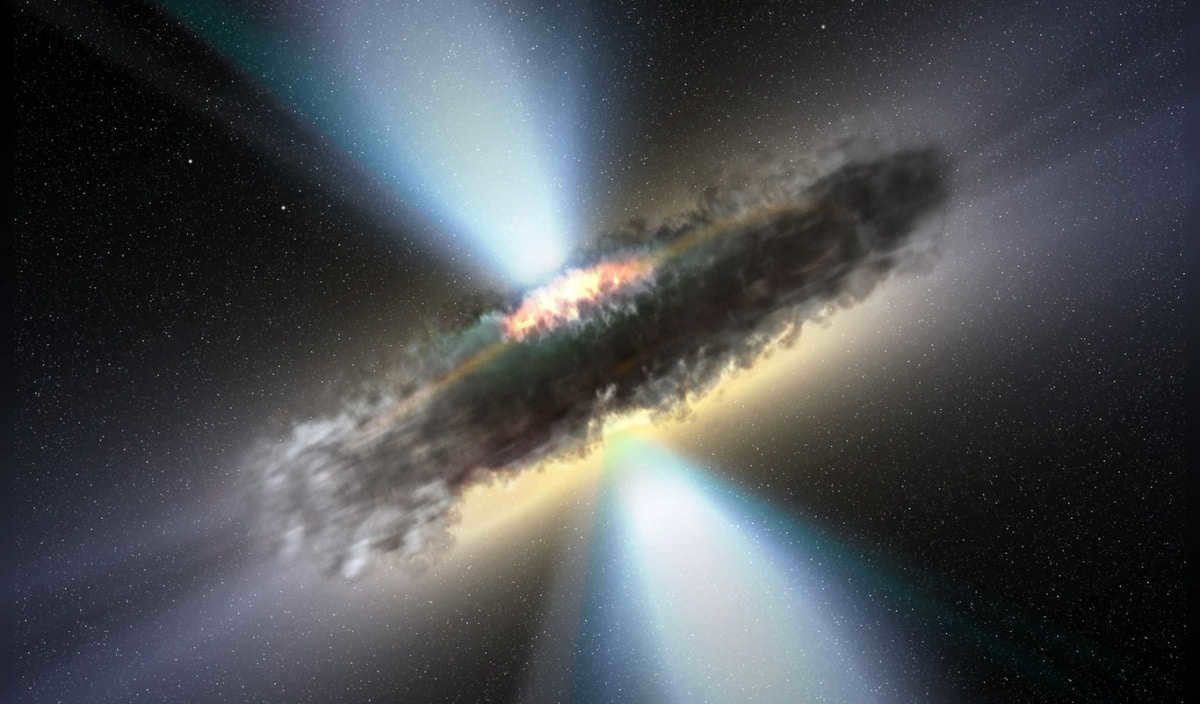
Contrary to previous beliefs, a black hole does not attract and consume everything in its vicinity. In order for planets, light, and other matter to be absorbed by a black hole, you must be within close proximity to its gravitational pull. Once you reach the point of no return, you find yourself on the event horizon, from which escape is impossible.
Furthermore, once we reach the event horizon, it is theoretically possible to move faster than the speed of light. Despite their immense power, black holes are actually quite small in size. For instance, a black hole located at the center of certain galaxies can have a radius of up to 3 million kilometers. This is equivalent to around 4 times the size of our sun. However, if a black hole has the same mass as our sun, its diameter would only be 3 kilometers. Although these cosmic phenomena may seem intimidating, it is important to remember that fear is inherent in the vastness of the universe.
It is important to note that a black hole has the ability to consume all matter and space-time itself. Furthermore, it not only absorbs light, but it possesses an incredibly strong gravitational pull that can magnify anything within its vicinity. The black hole itself appears completely devoid of any distinguishing features. Additionally, the substantial impact they have on the environment has prevented us from exploring them further. These celestial objects are also renowned for emitting massive amounts of energy.
Due to these reasons, the initial exploration of a black hole involves utilizing a network of mirrors. These mirrors serve as radioscopes that allow us to measure radiation from outer space. However, it is important to note that these radioscopes do not function like traditional telescopes by providing us with a view into the universe. In order to specifically detect two black holes, a fluoroscope was employed. One notable example of a black hole is the supermassive black hole located at the center of our galaxy.
The development of the black hole
Due to their small and dark nature, direct observation of black holes is not possible. As a result, scientists have long postulated their existence, based on indirect evidence. To detect a black hole, it is necessary to measure the mass of a specific region in space and identify areas with a significant amount of dark mass.
Double star systems are known to contain numerous black holes. These gravitational powerhouses attract mass from the surrounding stars, causing their own size to increase over time. Eventually, the companion star, which serves as the source of mass, will completely vanish.
Understanding the formation of a black hole is one of the most extensively researched topics in the field of astrophysics. By delving into this information, we can gain deeper insights into the formation process and the unique characteristics of these enigmatic entities.

